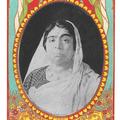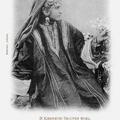Long Live the Revolution! Shrimati Sarojini Naidu
An advertising postcard celebrating the Independence struggle and the poet Sarojini Naidu, who the Turkish poet Halide Edib, then on a visit to India, described in her book Inside India (1938, p. 44):
"Sarojini is a poet.










